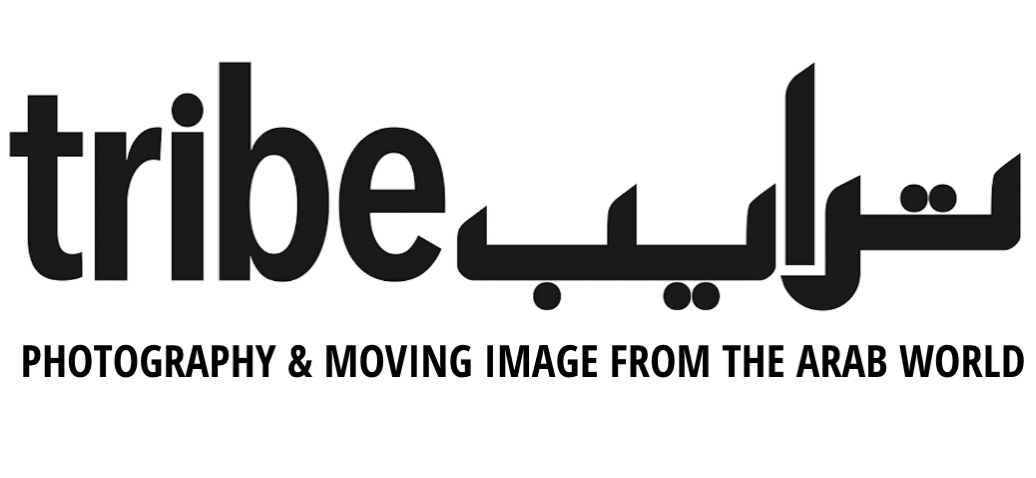John Halaka: Faces From Erased Places
Photography, memory and the dispossessed
John Halaka, Hands of Time (2015); Sabra and Shatila from the series Faces From Erased Places (2018), Sepia print. Courtesy of the artist
With text by Valerie Behiery, arts writer.
Abu Samir does not look at us. His mournful eyes stare off into space somewhere over our right shoulders. His hands, framed by a striped shirt and clasped at the waist, also appear lost in thought. A landscape of rubble figures in lieu of his chest. The mound of destroyed houses topped by a lone minaret illuminates the pain etched across his creased face. Unfurled at the level of his heart, the image deciphers a life built around the burden of exile and loss. Umm Aziz’s gaze is also oblique. In the central image, the elderly woman holds a poster carrying the faces of four men. Her facial expression and downcast eyes convey that the men are dead or missing. In the image on the right, her fingers are clutching a small piece of earth, a treasured, tangible memory of her homeland, long left behind.
Like all of the works in John Halaka’s Faces From Erased Places addressing the issues of Palestinian displacement and occupation, the two photographic triptychs visually communicate the centrality of memory in contemporary Palestinian lives. Palestinians have not only been dispossessed of their land; their history and culture, along with the tragic effects of the Nakba have equally undergone endless attempts of obliteration. Because memory often remains the Palestinians’ sole connection to their motherland, its survival constitutes an act of resistance. In Will the Young Forget?, the Palestinian-American artist consciously counters the Israeli adage “The old will die and the young will forget.” The triptych’s central mandala-like photograph references the land, while the double exposures on either side narrate the transmission of cultural memory from the elders to the youth. In both photographs, a significant object is passed on; on the left, a set of keys from a lost or confiscated house promises return and, on the right, prayer beads signal the faith of hope and the hope of faith. Halaka masters the use of the multiple exposure as an aesthetic strategy to meld person and place, past and present, as well as dream and reality.
Faces From Erased Places reveals photography’s capacity to act as a witness to human experience and history. The series, forming part of the much larger Portraits of Denial & Desire project on Palestine involving not only photography, but also drawing, film, an oral history archive, and writing, effectively possesses a documentary dimension. Contesting the erasure of Palestinians from media, political, and public discourses, Faces From Erased Places records the experiences of individual Palestinians, mapping, in particular, the deep existential scars that the Nakba inflicted. While the multipart portraits function as autonomous visual documents, all are accompanied by texts that succinctly recount the life stories of those represented. We learn, for example, that Abu Samir, who became a refugee at age eleven, remembers a time when Muslims, Jews and Christians lived peacefully together in Palestine or that the studious Hussein Lubani, forced to flee El Damoun, Palestine as a young boy, had to guide his blind grandmother during the harrowing escape. Umm Aziz lost two infants after Israeli army gunfire chased her from her native village and, then much later, her four sons during the Sabra and Shatila massacre. Abu Ibrahim’s story offers some reprieve as he continues to live in the West Bank village where he was born, carrying on the farming tradition of his ancestors, despite much adversity.
If the texts are difficult to read, they secure a place in history for Palestinian lives that mainstream history ignores, denies or dehumanizes. Like all indigenous peoples facing annihilation, Palestinians require an archive to ensure that the memory of their suffering and resilience be preserved. John Halaka has devoted thirty years of travel, discussions and artmaking to creating such an archive. Identifying with the philosophy of ‘the artist as public servant,’ the University of San Diego professor strives relentlessly in his life and work to be on the right side of history. As he explains, “Recording the narratives of Palestinian survivors and presenting them through art, literature and films is part of a critical effort to make the unseen seen, and the unheard heard, so no one can ever say, “I didn’t know.”
Behiery, Valerie (2020). John Halaka: Faces From Erased Places. Tribe, 10, 92-97.



